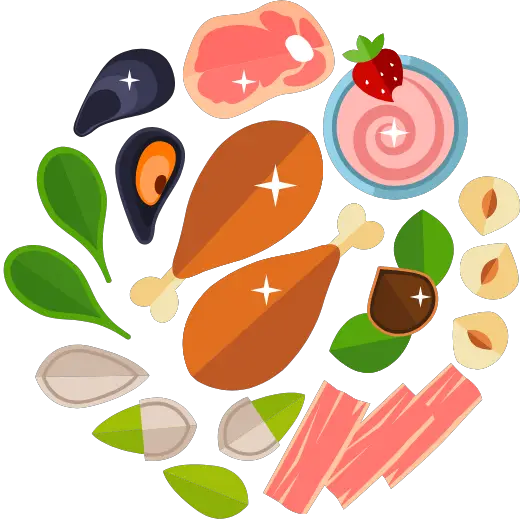In the world of gastronomy, few cuisines place as much emphasis on visual beauty and seasonal harmony as the traditional food of Japan, known as Washoku (和食). Recognized as a UNESCO Intangible Cultural Heritage, Washoku is far more than a collection of recipes; it is a holistic philosophy that governs the selection, preparation, and presentation of food. It is often said that in Japan, one “eats with their eyes first,” a principle that reveals a deep cultural respect for ingredients, nature, and the dining experience itself.
This guide is an invitation to explore the core principles of Washoku, particularly as they apply to the everyday beauty of Japanese home cooking. By understanding its foundations, one can begin to appreciate the artistry and mindfulness that transform a simple meal into a work of seasonal art.
The Foundation: The Five Pillars of Washoku
The aesthetic and nutritional philosophy of Washoku is built upon a set of guiding principles that have been refined over centuries. These are not rigid rules but rather a framework for creating meals that are balanced, beautiful, and in harmony with nature.
- Embracing the Season (旬 – Shun): This is the most important principle. Shun refers to the peak season of an ingredient, the time when it is at its most flavorful, nutritious, and abundant. A Washoku meal is a celebration of the present moment, showcasing ingredients like tender bamboo shoots in spring, vibrant eggplant in summer, earthy mushrooms and chestnuts in autumn, and sweet, hearty daikon radish in winter. This focus ensures maximum flavor and a deep connection to the natural cycle.
- The Balance of One Soup, Three Sides (一汁三菜 – Ichijū Sansai): This is the traditional structure of a well-balanced Japanese meal. It provides a blueprint for nutritional completeness and a variety of flavors and textures. The components are:
- Gohan (ご飯): A bowl of steamed Japanese rice, the neutral, comforting centerpiece of the meal.
- Shirumono (汁物): A bowl of soup, most commonly miso soup, which provides hydration and umami.
- Okazu (おかず): Three side dishes, which typically consist of:
- A main protein dish (Shusai), such as grilled fish or simmered pork.
- Two smaller vegetable-based dishes (Fukusai), such as a blanched spinach salad or pickled cucumbers.
- The Five Colors (五色 – Goshiki): A guiding principle for visual appeal and nutritional diversity is to incorporate five colors:
- White: Rice, tofu, daikon
- Black/Dark: Seaweed (nori, hijiki), black sesame seeds, shiitake mushrooms
- Red/Orange: Salmon, carrots, pickled plums (umeboshi), red bell peppers
- Green: Spinach, cucumber, scallions, edamame
- Yellow: Egg (tamagoyaki), sweet potato, kabocha squash
By naturally striving for these colors, a cook creates a plate that is not only beautiful but also rich in a wide range of vitamins and minerals.
- The Five Flavors (五味 – Gomi): A balanced meal should engage the palate with five core tastes: sweet, sour, salty, bitter, and umami. This complexity ensures a satisfying and complete sensory experience. For example, a meal might include the sweetness of mirin in a sauce, the sourness of a vinegar-based pickle, the saltiness of miso soup, the slight bitterness of a green vegetable, and the rich umami of dashi broth.
- The Five Methods (五法 – Goho): Variety in texture and flavor is achieved by using five primary cooking methods: simmering (niru), grilling (yaku), steaming (musu), deep-frying (ageru), and raw preparation (namamono, like sashimi). A single meal will often feature dishes prepared using several of these techniques.
The Art of Presentation (盛り付け – Moritsuke)
Once the food is prepared, the final act of artistry begins. Moritsuke is the delicate and intentional arrangement of food on a plate, guided by aesthetic principles deeply rooted in Japanese art.
The Beauty of Empty Space (余白の美 – Yohaku no Bi)
Unlike Western plating that often fills the entire dish, Japanese presentation values empty space. This “blank canvas” draws focus to the food itself, highlighting its shape, color, and texture. Food is often arranged asymmetrically and off-center to create a sense of natural, dynamic beauty.
Harmony with the Vessel (器 – Utsuwa)
The serving dish is not merely a container; it is an integral part of the composition. The color, shape, and texture of the pottery or lacquerware are carefully chosen to complement the food and evoke the season. A cool, clear glass bowl might be used for a chilled noodle dish in summer, while a warm, earthy ceramic plate might be chosen for a simmered root vegetable dish in winter.
Seasonal Garnishes
Small, natural garnishes are used to anchor the dish in the current season. A vibrant maple leaf might accompany a grilled fish in autumn, while a sprig of a flowering herb might adorn a dish in spring. These small touches reinforce the connection to nature.
Washoku in the Home
While these principles may seem complex, they are beautifully integrated into everyday Japanese home cooking. The daily preparation of a bento box is a perfect example of Washoku in practice, where a mother carefully arranges a colorful and balanced assortment of small dishes. A simple weeknight dinner of grilled fish, rice, miso soup, and a side of pickles effortlessly fulfills the ichijū sansai model.
In essence, Washoku is a mindful approach to eating that encourages us to slow down and appreciate the world around us. It is a philosophy that finds beauty in the transient nature of the seasons and elevates the daily act of cooking and eating into a moment of gratitude and aesthetic pleasure. We encourage you to look at your next meal not just as sustenance, but as an opportunity to create a small, beautiful, and delicious reflection of the present moment.
